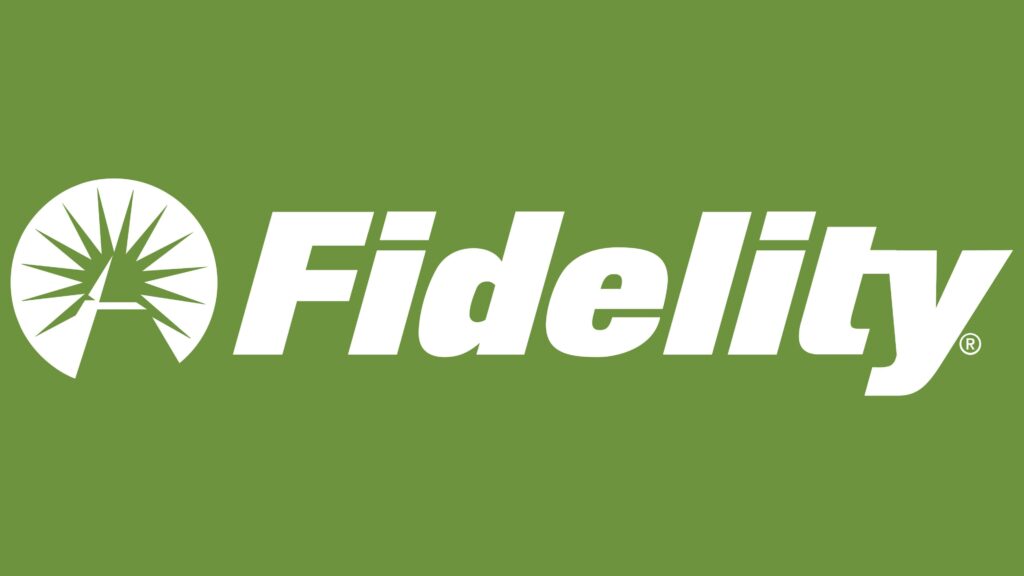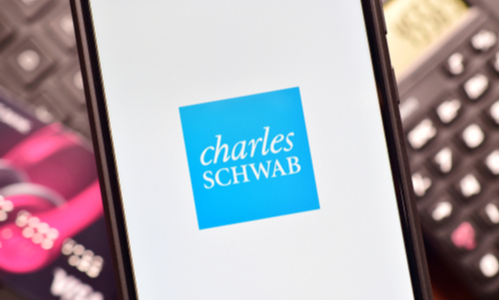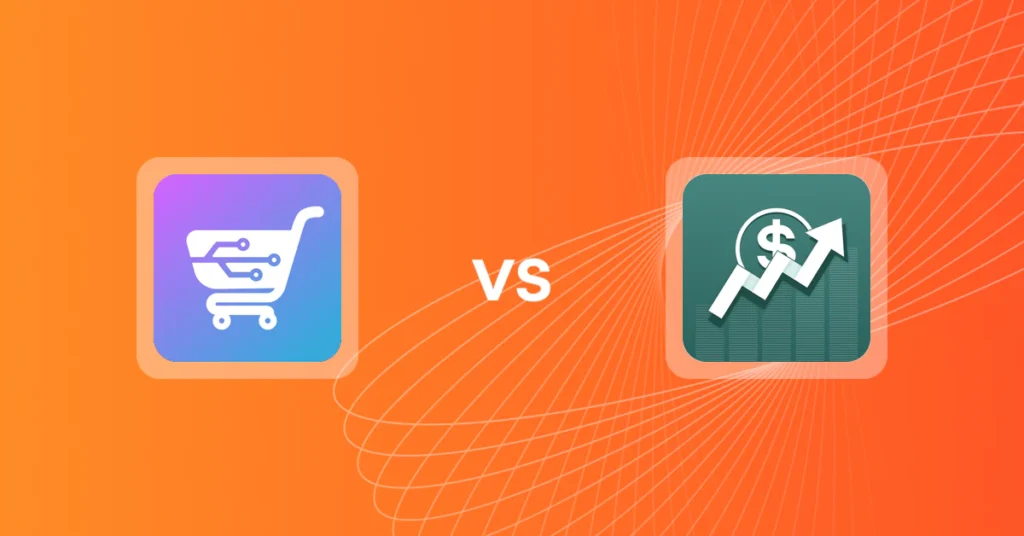The headline is a deliberate provocation, yet it taps into a palpable anxiety and excitement coursing through the financial world. Is there truly a free artificial intelligence that can render a human financial advisor—a professional whose median salary exceeds $102,140 annually—obsolete?
This question, once the domain of science fiction, is now a pressing strategic concern for Wall Street and a practical consideration for Main Street investors.
The premise of an intelligent, automated, and free financial steward is not just compelling; it represents a potential paradigm shift in how wealth is built and managed.
This is not a niche trend simmering in a corner of Silicon Valley; it is a seismic, market-altering shift. The global robo-advisory market, valued at $6.61 billion in 2023, is on an explosive trajectory, with projections estimating a compound annual growth rate of 30.5% to reach $41.83 billion by 2030.
The New Guard: Profiling the Top “Free” AI Financial Managers
The abstract concept of “an AI tool” materializes in a competitive field of real-world platforms, each vying to become the default financial co-pilot for a new generation of investors.
While no single application has definitively replaced the human advisor, several leading contenders have come remarkably close to fulfilling the promise of the headline, offering powerful, algorithm-driven financial management at little to no direct cost.
A critical examination of these platforms reveals the distinct strategies and trade-offs inherent in the new world of automated finance.
Fidelity Go: The Behemoth’s Free Entry Point

Fidelity Go represents the strategic deployment of a financial titan’s resources to capture the entry-level market. Its core proposition is exceptionally compelling for beginners: no advisory fees and no fund expense ratios for accounts with balances under $25,000.
With a minimum investment of just $10 required to get started, it stands as one of the most accessible and frictionless entry points into professionally managed investing.
The investment methodology is a key differentiator. Portfolios are constructed exclusively using Fidelity’s proprietary Fidelity Flex® mutual funds, which are notable for having zero expense ratios.
This structure is managed with a significant degree of human oversight; a team of Fidelity’s registered investment advisors makes the day-to-day trading decisions, providing a layer of professional judgment that complements the platform’s algorithmic model.
This approach is designed to blend the consistency of automation with the experience of human managers.
As an investor’s assets grow, the platform evolves. Once an account balance surpasses the $25,000 threshold, the service transitions from a pure robo-advisor to a hybrid model.
At this stage, the client pays an annual advisory fee of 0.35% but gains unlimited access to 30-minute one-on-one coaching calls with a team of Fidelity advisors. This structure creates a clear path for clients to scale their relationship with Fidelity as their financial needs become more complex.
However, the platform is not without its limitations. The most significant drawback is the absence of tax-loss harvesting, a sophisticated strategy for minimizing tax liabilities in taxable accounts that is a cornerstone feature for competitors like Wealthfront and Betterment.
Furthermore, Fidelity Go currently offers no specialty portfolios, such as those focused on Socially Responsible Investing (SRI), which may be a deterrent for investors who wish to align their portfolios with their personal values
Schwab Intelligent Portfolios: The “No Advisory Fee” Pioneer

Charles Schwab’s entry into the robo-advisory space was a disruptive force, built around a powerful and almost unheard-of value proposition: no advisory fees and no commissions, regardless of the account balance.
This bold strategy immediately set it apart from competitors and positioned it as a leader for fee-conscious investors.
The platform’s investment methodology relies on a broadly diversified portfolio of exchange-traded funds (ETFs).
The system considers over 50 different ETFs across a wide range of asset classes, including Schwab’s own low-cost funds, to construct a portfolio aligned with the user’s risk profile.
For clients with invested assets of $50,000 or more, the platform offers automated tax-loss harvesting, a key feature for maximizing after-tax returns.
This “no fee” model, however, comes with significant trade-offs. First, the service requires a higher account minimum of $5,000 to get started, making it less accessible for absolute beginners compared to Fidelity Go or Betterment.
More critically, the platform has drawn scrutiny for its requirement of a high cash allocation in its portfolios, which can range from 6% to as high as 30%.
During periods of strong market growth, this substantial cash position can act as a significant drag on overall portfolio returns, a point frequently raised by industry analysts. This structural feature is not an accident but a core component of its business model, which will be explored in detail later.
For investors seeking human guidance, Schwab offers a premium tier. For a one-time $300 planning fee and a recurring $30 monthly subscription, clients with at least $25,000 can gain access to a Certified Financial Planner (CFP) for personalized advice and a comprehensive financial plan.
Empower Personal Dashboard (formerly Personal Capital): The Ultimate Free Financial Cockpit

Empower Personal Dashboard occupies a unique position in this landscape. It is not primarily a robo-advisor that directly manages investments for free users, but rather a powerful, comprehensive financial aggregation and analysis platform offered at no cost.
Its core function is to provide users with a holistic, real-time view of their entire financial life. By linking all of their accounts—checking, savings, 401(k)s, IRAs, mortgages, credit cards—users can see a consolidated dashboard of their net worth, cash flow, and investment holdings.
The value of the platform lies in its suite of sophisticated, free analytical tools. The Retirement Planner uses AI-driven simulations to project whether a user is on track to meet their retirement goals, allowing them to model various scenarios.
The Investment Checkup tool analyzes a user’s aggregated portfolio for asset allocation, risk, and historical performance. Perhaps most valuable is the AI-based Fee Analyzer, which can dissect a user’s retirement accounts and expose the often-hidden layers of fees that can erode returns over time.
The business model behind this powerful free offering is transparent and direct: it is a highly effective lead-generation engine for Empower’s paid wealth management services. The platform is designed to attract and engage mass-affluent and high-net-worth individuals.
Once a user links accounts totaling over $100,000 in investable assets, they become a prime candidate for Empower’s human advisors and should expect to receive marketing communications inviting them to become a paid client.
What’s the *True Cost* of “Free” Financial Tools?
The “Free” Platform Myth
“Free” financial platforms aren’t all the same. Each “free” offer is actually one of three different business strategies.
Understanding the difference is the first step to knowing the true cost of the “free” service you’re using. Let’s break it down.
Empower: Your Financial Cockpit
Empower Personal Dashboard is not a robo-advisor. It’s a powerful financial aggregation platform offered at no cost.
- It links all your accounts: checking, 401(k)s, mortgages, etc.
- It gives you a single, real-time dashboard of your entire net worth, cash flow, and investments.
Empower’s Free Tools (The Hook)
The platform’s value comes from its sophisticated (and free) analysis tools:
- Retirement Planner: Uses AI simulations to see if you’re on track for retirement.
- Investment Checkup: Analyzes your portfolio for risk and allocation.
- AI-based Fee Analyzer: Exposes hidden fees in your retirement accounts.
Empower’s Model (The “Catch”)
The business model is transparent: it’s a lead-generation engine for Empower’s paid wealth management.
- It’s designed to attract high-net-worth individuals.
- If you link accounts over $100,000, you become a prime candidate.
- You should expect marketing calls inviting you to become a paid client.
Model 1: Fidelity Go
Fidelity uses a Freemium Tier model.
- It’s free for balances under $25,000.
- The Goal: To acquire small accounts and upsell you to their paid 0.35% advisory fee once your assets grow past $25k.
Model 2: Schwab Intelligent Portfolios
Schwab operates as a Loss-Leader.
- It has a $0 advisory fee at all balance levels.
- The Goal: It makes money through other means, like its cash sweep program at Schwab Bank and fees on its own Schwab ETFs.
The 3 “Free” Strategies
Here’s the summary of the true “cost”:
- Fidelity (Freemium): Aims to upsell you to a paid tier later.
- Schwab (Loss-Leader): Profits from its own banking and fund ecosystem.
- Empower (Lead-Gen): Offers free tools to find high-net-worth clients for its core advisory business.
The Anatomy of “Free”: Uncovering the Real Business Models
The allure of “free” is the most powerful marketing tool in the digital age. In the fintech sector, however, it is rarely an act of charity. Instead, it represents a sophisticated client acquisition strategy where the revenue model is simply less direct.
Understanding the intricate economic engines that power these “free” platforms is essential for any investor looking to assess the true costs, potential conflicts of interest, and the fundamental trade-offs they are making.
The popular adage, “If you’re not paying for the product, you are the product,” finds a powerful illustration in the world of freemium financial advice, where users pay not with direct fees, but with performance drag, ecosystem captivity, or their own data.
The Cash is King: How Schwab’s Cash Sweep Works

Schwab Intelligent Portfolios’ “no advisory fee” model is predicated on a clever and lucrative banking mechanism: the cash sweep. The platform’s algorithm requires that every client portfolio, regardless of its risk profile, holds a significant allocation to cash—typically between 6% and 30%.
This cash is not left idle in a brokerage account. Instead, it is automatically “swept” into FDIC-insured deposit accounts at Charles Schwab Bank.
This is where the revenue is generated. Schwab Bank takes these pooled deposits and lends them out or invests them at a higher interest rate, earning income on the net interest margin—the spread between the return it generates and the interest rate it pays back to the client on their cash holdings.
Schwab is transparent about this arrangement, stating explicitly in its disclosures that the revenue generated by Schwab Bank from this cash allocation is a primary reason it can forgo a direct advisory fee.
This structure, however, creates a subtle but significant conflict of interest. The platform’s parent company has a direct financial incentive to maximize the amount of cash held in client portfolios, as a larger cash allocation translates directly to higher revenue for Schwab Bank.
This incentive may not always align with the client’s primary goal of maximizing investment returns. In a rising market, a large cash position can substantially hinder portfolio performance, acting as a drag that could potentially cost the investor more in missed gains than a typical advisory fee would have.
The “payment” for the free service is thus an indirect one, made through this potential opportunity cost.
The Walled Garden: Fidelity’s Proprietary Fund Ecosystem

Fidelity Go’s strategy for its free tier (under $25,000) is rooted in ecosystem economics. The platform exclusively uses its own proprietary Fidelity Flex® mutual funds to construct client portfolios.
While these funds are legitimately attractive for their zero expense ratios, this “walled garden” approach serves a much larger strategic purpose for the firm.
By offering a high-quality, professionally managed investment account with no fees for small balances, Fidelity creates a powerful and low-friction entry point for new investors, particularly younger demographics who may be starting their financial journey.
The goal is client acquisition and long-term retention. Fidelity is betting that as these investors’ assets grow and their financial lives become more complex, they will be more likely to remain within the familiar and trusted Fidelity ecosystem.
The free robo-advisor, therefore, acts as a gateway to Fidelity’s vast array of other, fee-generating products and services.
A client who starts with Fidelity Go may eventually open a Fidelity brokerage account to trade individual stocks, roll over a 401(k) into a Fidelity IRA, or ultimately graduate to one of Fidelity’s premium wealth management services. The free service is an investment in a future paying customer.
The Upsell Engine: Empower’s Lead Generation Funnel

The business model for the Empower Personal Dashboard is the most straightforward of the three: the powerful free tool is an exceptionally effective apparatus for identifying and converting high-net-worth clients into its core paid advisory business.
The process begins when a user signs up for the free service and links their various financial accounts. This act of aggregation provides Empower with a comprehensive, real-time view of the user’s total financial picture: their assets, liabilities, income, and spending habits.
Empower’s internal systems then analyze this rich dataset to identify promising leads—typically users who have more than $100,000 in investable assets.
Once a user crosses this threshold, they are moved from a “free user” bucket to a “prospective client” bucket. This triggers a persistent and targeted marketing campaign.
The user can expect to receive phone calls and emails from Empower’s financial advisors, who will use the insights gleaned from the dashboard to make a compelling case for signing up for the company’s paid wealth management services.
In this model, the user’s “payment” for the sophisticated free tools is their data and their attention. While Empower’s legal disclosures state that they do not sell user information to external third parties, they explicitly reserve the right to use that data for their own internal marketing purposes.
The user, in effect, agrees to become a sales lead in exchange for access to the platform. For many, this is a worthwhile trade-off, given the high quality of the free tools.
The Ultimate Showdown: Algorithmic Precision vs. Human Wisdom
The debate over the future of financial advice often devolves into a simplistic “man versus machine” narrative. A more sophisticated analysis reveals that the core issue is not about which is “smarter,” but about understanding the fundamentally different types of intelligence each brings to the table.
Artificial intelligence possesses a superior computational intelligence, capable of processing data and executing tasks with a speed and consistency no human can match.
Humans, conversely, possess a superior emotional and contextual intelligence, allowing for empathy, nuanced judgment, and holistic understanding. A comprehensive financial plan requires both, and recognizing where each excels is key to understanding the future of wealth management.
The Irreplaceable Human: Where Empathy and Judgment Prevail

Despite the formidable capabilities of AI, there remains a vast and critical domain of financial advising where human intelligence is not just superior, but indispensable.
Emotional Intelligence (EQ): This is the quintessential human advantage. Financial decisions are rarely made in a vacuum; they are deeply intertwined with life’s most profound emotional experiences.
An algorithm cannot empathize with a client who has just lost a spouse and is facing a future of uncertainty. It cannot provide the calm reassurance needed to prevent a client from panic-selling during a market downturn.
It cannot navigate the complex and often unstated family dynamics surrounding an inheritance or a business succession plan. This ability to manage emotions, not just assets, is a core function of a great advisor.
Holistic, Complex Planning: AI is proficient at optimizing a portfolio based on a set of defined inputs, but it struggles with the messy, interconnected reality of a person’s entire financial life.
True financial planning is holistic, integrating disparate elements like estate planning, complex tax strategies, insurance needs, charitable giving, and legacy goals.
A human advisor can conduct a conversation that goes beyond the numbers to understand a client’s values and life aspirations, asking questions like, “What does an ideal retirement look like to you?” and then structuring a comprehensive plan to achieve that vision.
Adaptability & Nuance: Human advisors possess the ability to interpret subtext, to understand what is not being said in a client meeting, and to adapt a financial strategy in real-time based on subtle shifts in a client’s life circumstances or priorities.
An AI, by contrast, is bound by its predefined inputs and the logic of its algorithm. It cannot easily handle ambiguity or adjust for the unquantifiable, non-linear path that most lives follow.
Accountability & Fiduciary Duty: This is a crucial legal and ethical distinction. A human advisor, especially one who operates as a fiduciary, is legally and ethically bound to act in their client’s best interest.
They are accountable for the advice they give. An algorithm, on the other hand, has no moral compass, no ethical framework, and no personal accountability. This foundation of trust, built on a professional’s legal and ethical obligations, is a cornerstone of the advisor-client relationship that an AI cannot replicate.
AI vs. Human Advisors: The Ultimate Showdown!
Who’s Best for Your Money?
When it comes to managing your finances, is a cutting-edge AI or a trusted human advisor the better choice?
Let’s dive into a head-to-head comparison of key capabilities to find out where each truly excels!
Fiduciary Duty & Accountability
Portfolio Construction
Automated Rebalancing & Tax-Loss Harvesting
Cost-Effectiveness & Accessibility
Behavioral Coaching
Holistic Financial Planning
Navigating Complex Life Events
The Final Verdict: It’s a Tie!
The best solution often involves a **hybrid approach**.
Use AI / Robos for the mechanics of investing (low-cost, automated portfolios).
Use a Human Advisor for the guidance (holistic planning, behavioral coaching, and navigating life’s biggest moments).
The Verdict from the Experts: A Future of Cyborg Advisors
The accumulated evidence from market data, platform evolution, and the analysis of industry thought leaders points toward a clear and compelling consensus: the future of financial advice is not a zero-sum battle of “man versus machine.”
Rather, it is a future of synthesis, where the computational power of artificial intelligence augments the emotional and strategic wisdom of human professionals.
This emerging paradigm is not one of replacement, but of evolution, giving rise to a new breed of “cyborg advisor” who leverages technology to deliver a higher standard of service.
The Emerging Consensus: Augmentation, Not Replacement

The dominant view among financial planning experts is that AI will serve as a powerful force multiplier for human advisors, not as their replacement.
Esteemed industry analyst Michael Kitces argues that AI’s primary role will be to automate the mechanical and computational aspects of financial planning—tasks like cash flow modeling, tax optimization, and portfolio rebalancing.
This perspective is echoed by institutions like the World Economic Forum, which concludes that the optimal future is a “seamless blend of human intuition and AI innovation”.
In this model, AI enhances the advisor’s expertise, deepens their capacity for client engagement, and expands their ability to provide guidance at scale.
For advisors, this technological shift is not an existential threat to their job security but a powerful call to adapt and elevate their value proposition beyond mere portfolio management.
The Advisor’s Evolving Role

This evolution is already well underway. A 2025 survey revealed that 41% of financial advisors are already using one or more generative AI tools in their practice. They are integrating specialized AI platforms to enhance nearly every aspect of their workflow.
Tools like Advisable AI use predictive analytics for prospect scoring, Microsoft Copilot automates the drafting of emails and the summarization of meeting notes, AlphaSense leverages AI for advanced investment research, and platforms like Evercompliant streamline complex compliance monitoring.
This integration is fundamentally reshaping the advisor’s daily work and their core value proposition. The advisor’s role is shifting away from being a manager of information—a task at which AI now excels—and toward being a manager of emotions and behavior.
They are becoming less of a portfolio manager and more of a financial therapist, a behavioral coach, and a strategic life planner who helps clients align their money with their values.
The Rise of the Hybrid Model

The market itself is confirming this trend toward a blended approach. The “hybrid” robo-advisory model, which combines the algorithmic efficiency of a robo-platform with the on-demand access and oversight of human financial advisors, has become the dominant segment of the industry.
In 2023, hybrid models accounted for 63.8% of the global robo-advisory market’s revenue, demonstrating a clear consumer preference for a solution that offers the best of both worlds.
Leading platforms are leaning into this model. Betterment offers a “Premium” tier that provides unlimited access to Certified Financial Planners for clients with over $100,000 for a higher fee of 0.65%. Schwab’s “Premium” service offers a similar structure, providing CFP access for a monthly fee.
These offerings are a direct response to market demand from investors who appreciate the low costs and automation of a robo-advisor but still want the peace of mind and personalized guidance that only a human expert can provide. The future, it seems, is not fully automated, but intelligently assisted.
The Fine Print: Navigating the Hidden Risks of AI Financial Advice
While the promise of AI-driven finance is immense, a prudent investor must approach these new technologies with a healthy dose of skepticism and a clear understanding of their inherent risks.
The convenience and low cost of automated tools can mask significant potential pitfalls, from flawed advice to serious data privacy vulnerabilities.
The primary risk of these free AI tools stems not from the possibility of a mathematical error, but from the fact that the algorithms are fundamentally amoral and acontextual, lacking the ethical framework and real-world understanding that underpins trustworthy financial guidance.
The Danger of Bad Advice: Inaccuracy and Oversimplification

Publicly available AI tools can generate financial advice that is dangerously inaccurate or misleading.
The European Securities and Markets Authority (ESMA) warns that these systems can base their recommendations on outdated, incorrect, or incomplete information, potentially leading to poor investment decisions and significant financial losses.
Unlike a regulated human advisor, these tools have no obligation to ensure the information they provide is timely or correct.
Furthermore, AI often oversimplifies complex financial situations, offering “quick fixes” that can be actively harmful.
For instance, an AI chatbot might suggest a high-interest payday loan to someone in a cash crunch, a recommendation that is technically a solution to the immediate problem but fails to account for the devastating long-term consequences of entering a debt trap.
The AI lacks the context to understand a user’s full financial picture or personal constraints; it cannot know that suggesting a “second job” is impractical for a single parent burdened by childcare costs.
It provides blanket information without the personalized nuance required for sound financial planning.
Algorithmic Bias: “Garbage In, Gospel Out”

One of the most insidious risks of AI is algorithmic bias. These models learn by analyzing vast quantities of historical data. If that data reflects long-standing societal biases, the AI will not only learn and replicate those biases but can also amplify them at a massive scale.
In finance, this can have devastating consequences. An algorithm trained on historical mortgage lending data, which may contain decades of discriminatory redlining practices, could learn to systematically deny loans to qualified applicants in certain zip codes or from specific demographic groups.
A recent study published in PLOS ONE found that popular Large Language Models (LLMs), when asked for investment advice, can reinforce common investor biases, such as a tendency to overweight domestic stocks, potentially leading to less diversified and riskier portfolios.
The AI, with its convincing tone of confidence, can mask these underlying biases, steering users toward suboptimal outcomes.
The “Black Box” Problem and Lack of Accountability

Many sophisticated AI models operate as “black boxes,” meaning that even their own developers cannot fully explain the precise reasoning behind a specific recommendation.
This lack of transparency can make it impossible for a user to critically evaluate the advice they are given, eroding trust and making it difficult to spot potential flaws in the model’s logic.
This opacity is compounded by a critical lack of accountability. Publicly available AI tools are generally not authorized or supervised by financial regulators like the U.S. Securities and Exchange Commission (SEC).
They are not legally required to act as a fiduciary, a standard that compels human advisors to act in their client’s best interest. This means that if an investor follows an AI’s advice and suffers significant financial losses, they may have no legal recourse.
There is no access to a financial ombudsman or alternative dispute resolution mechanisms, leaving the user to bear the full cost of the algorithm’s mistake.
Data Privacy and Cybersecurity: Your Most Sensitive Data at Risk

To function effectively, financial AI tools require users to provide a comprehensive and intimate view of their financial lives. This aggregation of sensitive personal and financial data—account numbers, balances, transactions, income, and debt—creates a highly valuable target for cybercriminals.
A data breach at one of these platforms could expose users to identity theft, financial fraud, and a profound loss of privacy.
Regulators mandate that authorized financial firms implement robust security measures, but free, publicly available AI tools may not have the same level of security infrastructure in place.
Users must be exceptionally cautious about the data they share, understanding that they are entrusting their entire financial identity to the platform’s ability to defend against sophisticated and ever-evolving cyber threats.
Conclusion: Your New AI Co-Pilot, Not Your Autopilot
The provocative promise of a single, free AI tool completely replacing the human financial advisor is, for now, a compelling myth. An exhaustive analysis of the current technological landscape reveals a more nuanced and ultimately more powerful reality.
The revolution is not about a singular tool, but about an entire ecosystem of AI-driven platforms. These tools are not truly “replacing” advisors but are instead automating specific functions, thereby forcing human professionals to evolve their value proposition.
And critically, they are not “free”; they are paid for through a variety of indirect costs, whether it be a drag on performance, ecosystem lock-in, or the monetization of a user’s personal data and attention.
The investigation into the leading “free” platforms like Fidelity Go, Schwab Intelligent Portfolios, and the Empower Personal Dashboard uncovers the sophisticated business strategies that make them possible.
These are not charities but highly efficient client acquisition engines. Their existence has undeniably democratized access to powerful tools for financial tracking, basic portfolio management, and investor education.
For a beginner looking to get started or an experienced investor seeking a consolidated view of their assets, these platforms offer unprecedented value. They can bring clarity, instill discipline, and provide a data-rich foundation for making smarter financial choices.

